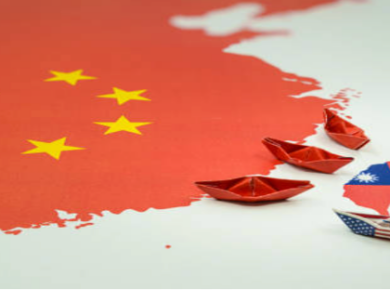Written by: Aashna Chatterjee
Disclaimer: This blog post solely reflects the opinion of the author and should not be taken to represent the general views of IPPR’s management team or those of fellow authors.
Syrian family receiving clothes and other items at their arrival in Canada (CTV News, 2016)
Over the past few years, the refugee crisis in Syria has reached an unavoidable level, greatly impacting its neighbouring countries as well as the Western World, especially in Europe. The reactions of these countries is still being debated about and discussed throughout the international community. Through a broader analysis using the three main International Relations Theories (Realism, Liberalism and Constructivism), it might be possible to understand and clarify the opinions and reactions of western states in the best manner possible.
Refugees and refugee movements are more than just human rights issues. They are and have always been an inherent part of international politics owing to the “way” an individual receives refugee status- conflict and war in the country of origin, which requires them to seek “refuge” in another country (Loescher and Betts; 2011). In the case of the Syrian Refugee crisis, some of the countries that these displaced people have fled to, are those belonging to the European Union. International Relations theories on the other hand, help understand the International arena and provide various “lenses” or perspectives through which one can study it. Thus, an operative theory might help in breaking down the crisis and the debates surrounding it and might help clarify which perspective suits the dynamics a world in crisis, the best.
Realism suggests that the protection of national security is of utmost importance and in this anarchical setting, every country must act out of its own self-interest and thus strive to remain in power. If it is not in the interest of a developed, western country to aid developing nations, then they won’t. For instance, it would be difficult for a realist leader in the western world, like the United States to justify the entry of thousands of Syrians without insinuating terrorist activity or general domestic discord. In this way, a Realist would not allow a nation to risk its security, when it is already at risk by other foreign powers. This however, is not true of the current world dynamics. Countries have taken in a number of refugees and are working towards rehabilitating them. It is taking time and policies are being shaped around recent events, especially in the EU, but this goes against realist thought which would essentially close its gates to all refugees. While this may be the case for a very few countries, it is not a statement that can be generalised. Furthermore, International Organisations have been prevalent in the dialogue surrounding refugees and this would not have been possible in a realist world. Thus again, Realism only explains a part of the situation but is unable to encapsulate it as a whole.
In this case, why not look at the opposite side of the spectrum and see what Liberalism has to offer? Liberalism suggests that the best way to describe state behaviour is through an interdependent drive for peace. In other words, states are more likely to cooperate and establish a peaceful international community. A liberal perspective might look at the crisis and suggest that international cooperation would be the best way to tackle the crisis and that interdependency is what is needed to bring Syria back to life. Furthermore, a refugee coming into a new country would bring in economic advantage over time. A Liberalist would see this as a welcome development, which would help in the process of global, economic cooperation. This again, however is an ideal scenario as the current rhetoric of western states suggests that refugees are seen as people taking away jobs and physical space. Countries are actively rejecting refugees and suggesting a “cap” to the number of people they take in. This is further exacerbated by referring to refugees as “migrants” and thus stripping them of the rights given to them by the 1951 Human Rights Convention, an international treaty, created by an international organisation. This goes against Liberal thought as (a) International Institutions are very important in a liberal world and states comply with regulations set by these IOs and (b) it goes against the “law” of interdependency and cooperation.
Additionally, given the amount of time taken to address the crisis and the fact that it has broken more relationships between countries than it has possibly unified, it can be suggested that Liberalism only addresses one small part of the crisis. It can be used to describe not how the countries are acting currently but how they want to be seen as acting. Countries from the west have indeed banded together to help solve the problem in Syria and have cooperated a great deal to ensure the best possible outcome, however a liberal perspective still cannot be applied to this as each country acts based on their own context and not as a collective team.
This brings us to the last major International Relations theory: Constructivism. Constructivism as a lens is an interesting one: rather than trying to define the world, it seeks to analyse how one thinks about the world (Laffey, 2013 in Oezel, 2015). In constructivism, norms define everything and the world is socially constructed through discourse and practice. This incorporates linguistic practice and rhetoric, institutions and borders (Weldes et al, 1999; 16). It seeks to study how the world forms its assumptions and what the consequences are. Thus when it comes to the refugee crisis and the idea of security, constructivism looks towards a reality constructed through context. A country is likely to think of the “pros and cons” of taking in refugees based on a sense of collective discourse and context (Weldes; 16). In other words, the concept of security and insecurity comes from how individuals, state officials and media outlets describe the world they live in and how that constructs their identities and what they collectively deem as threats to their security. furthermore, the 1951 human rights convention explicitly states that it is a member state’s responsibility to protect refugees and some countries have indeed opened up their borders to welcome those in need. Constructivism would suggest that the convention created a norm for countries to follow. Through this lens, it is possible to gauge and analyse the reactions and policies made by western countries towards refugees. If we were to look at the context and the general discourse of how identity and security are defined in a country, it would help identify the way states are likely to react to the crisis.
The reactions of countries in the western world have varied from being welcoming towards refugees to closing their borders outright. International Relations scholars seek to generalise the phenomenon in order to best study this major crisis and one of the best ways to do this for them is use International Relations theories. This article hoped to shed some light on how the major theories in IR would define the reactions of western states towards the refugee crisis in Syria. Based on the discussion above, it can be suggested that Liberalism and Realism would only be able to explain certain parts of the crisis as opposed to being able to view the crisis as a whole. The crisis is far to complex to fit into a didactic framework set up by these two theories, especially realism. On the other hand, Constructivism, owing to its nature of studying discourse and context, might be the best out of the three to understand the situation and that is far more important than merely explaining it. Understanding the norms and discourse would enable one to understand the situation as a whole and thus be able to work towards a solution to this very large and important crisis.
Bibliography
Betts, A. and Loescher, G. eds., 2011. Refugees in international relations. Oxford University Press.
Oezel, Y.,2015. Providing Security? Border Control and the Politics of Migration in the EU.
Weldes, J., Laffey, M., Gusterson, H. and Duvall, R., 1999. Introduction: constructing insecurity. Cultures of insecurity: States, communities, and the production of danger, pp.1-33.






